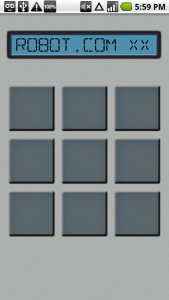Intro
Android is a wonderful platform. It has a rich API that allows you, a developer, to easily implement things that other platforms do not support at all or they need you to bend over backwards to get what you want.
The ability to develop a service that runs in the background and does something when the user is not actively working with your app is a great option for application authors. Examples of usage include mail or IM apps that send you a notification whenever there is a new message (we’ll discuss notifications and how to program them correctly in another post), background music players, background downloads and so on.
Yes, there is a dark side to Android background services too – too many services doing too much stuff in the background will slow down the phone and suck the battery. However it’s not quite what I wanted to bring up in this post, so maybe we’ll come back to resource management etiquette in yet another post.
Problem Definition
What we will develop here is a dummy application that contains the following components:
- A background service doing something important but not immediately visible to the user
- One or more activities that, once launched by the user, talk to the service, control the service and present some information that the service provides
The architecture also has the following characteristics:
- The service will run in a separate process, allowing the platform to manage its lifecycle and resources separately from the activities
- The service is supposed to run all the time (there are other valid usage patterns for services, but we won’t discuss that here)
- The UI (activities) will get updates from the service in a callback or passive mode, reacting to service events rather than polling the service for updates. This is very important in terms of effective architecture, so please keep it in mind for now
- Since the service will run in a different process, we need to use IPC to talk to it from activities. IPC stands for interprocess communication and is not an Android-specific term but Android has its own implementation (as we will see)
- The service will do all the thinking (business logic) while the UI will be designed to be as thin and dumb as possible. We’ll keep the architecture well-layered
- The service will be configured to start during system boot-up
In terms of functionality, our service will grab the latest #android tweets using the twitter search API. The activity will show the latest tweets grabbed by the service when you launch them, and update automatically. Yes, it is a pretty artificial use case, but later you can add notifications and turn the app into “Android News Notifier”, and then put it on the market. 
(more…)




